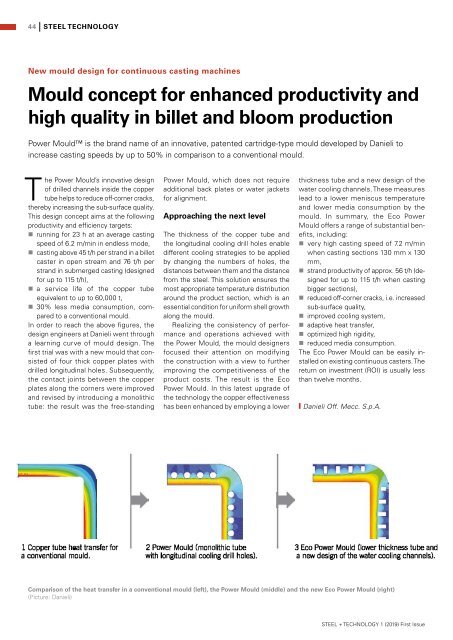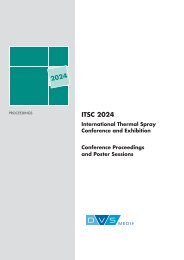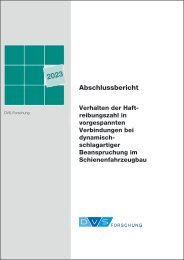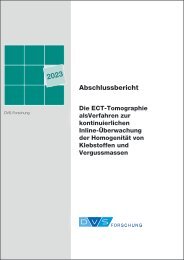STEEL + TECHNOLOGY 01/2019
- STEEL COMPANIES: Implementation of the new continuous casting plant at Saarstahl is on track - STEEL TECHNOLOGY: Ultra-thin hot rolled strip with only 0.6 mm thickness produced on Arvedi ESP line - ADDITIVE MANUFACTURING. 3D spray head for forging presses wins German Design Award
- STEEL COMPANIES: Implementation of the new continuous casting plant at Saarstahl
is on track
- STEEL TECHNOLOGY: Ultra-thin hot rolled strip with only 0.6 mm thickness produced on Arvedi ESP line
- ADDITIVE MANUFACTURING. 3D spray head for forging presses wins German Design Award
You also want an ePaper? Increase the reach of your titles
YUMPU automatically turns print PDFs into web optimized ePapers that Google loves.
44 | <strong>STEEL</strong> <strong>TECHNOLOGY</strong><br />
New mould design for continuous casting machines<br />
Mould concept for enhanced productivity and<br />
high quality in billet and bloom production<br />
Power Mould is the brand name of an innovative, patented cartridge-type mould developed by Danieli to<br />
increase casting speeds by up to 50% in comparison to a conventional mould.<br />
T<br />
he Power Mould’s innovative design<br />
of drilled channels inside the copper<br />
tube helps to reduce off-corner cracks,<br />
thereby increasing the sub-surface quality.<br />
This design concept aims at the following<br />
productivity and efficiency targets:<br />
• running for 23 h at an average casting<br />
speed of 6.2 m/min in endless mode,<br />
• casting above 45 t/h per strand in a billet<br />
caster in open stream and 76 t/h per<br />
strand in submerged casting (designed<br />
for up to 115 t/h),<br />
• a service life of the copper tube<br />
equivalent to up to 60,000 t,<br />
• 30% less media consumption, compared<br />
to a conventional mould.<br />
In order to reach the above figures, the<br />
design engineers at Danieli went through<br />
a learning curve of mould design. The<br />
first trial was with a new mould that consisted<br />
of four thick copper plates with<br />
drilled longitudinal holes. Subsequently,<br />
the contact joints between the copper<br />
plates along the corners were improved<br />
and revised by introducing a monolithic<br />
tube: the result was the free-standing<br />
Power Mould, which does not require<br />
additional back plates or water jackets<br />
for alignment.<br />
Approaching the next level<br />
The thickness of the copper tube and<br />
the longitudinal cooling drill holes enable<br />
different cooling strategies to be applied<br />
by changing the numbers of holes, the<br />
distances between them and the distance<br />
from the steel. This solution ensures the<br />
most appropriate temperature distribution<br />
around the product section, which is an<br />
essential condition for uniform shell growth<br />
along the mould.<br />
Realizing the consistency of performance<br />
and operations achieved with<br />
the Power Mould, the mould designers<br />
focused their attention on modifying<br />
the construction with a view to further<br />
improving the competitiveness of the<br />
product costs. The result is the Eco<br />
Power Mould. In this latest upgrade of<br />
the technology the copper effectiveness<br />
has been enhanced by employing a lower<br />
thickness tube and a new design of the<br />
water cooling channels. These measures<br />
lead to a lower meniscus temperature<br />
and lower media consumption by the<br />
mould. In summary, the Eco Power<br />
Mould offers a range of substantial benefits,<br />
including:<br />
• very high casting speed of 7.2 m/min<br />
when casting sections 130 mm x 130<br />
mm,<br />
• strand productivity of approx. 56 t/h (designed<br />
for up to 115 t/h when casting<br />
bigger sections),<br />
• reduced off-corner cracks, i.e. increased<br />
sub-surface quality,<br />
• improved cooling system,<br />
• adaptive heat transfer,<br />
• optimized high rigidity,<br />
• reduced media consumption.<br />
The Eco Power Mould can be easily installed<br />
on existing continuous casters. The<br />
return on investment (ROI) is usually less<br />
than twelve months.<br />
• Danieli Off. Mecc. S.p.A.<br />
\<br />
1 Copper tube heat transfer for<br />
a conventional mould.<br />
2 Power Mould (monolithic tube<br />
with longitudinal cooling drill holes).<br />
3 Eco Power Mould Clower thickness tube and<br />
a new design of the water cooling channels).<br />
Comparison of the heat transfer in a conventional mould (left), the Power Mould (middle) and the new Eco Power Mould (right)<br />
(Picture: Danieli)<br />
<strong>STEEL</strong> + <strong>TECHNOLOGY</strong> 1 (2<strong>01</strong>9) First Issue


















